How to Identify Swing High and Swing Low to Boost Your Profit

Did you know that learning how to identify swing high and swing low on any given chart has a massive possibility of improving your success as a trader? By identifying swing highs and lows correctly, you’ll be able to stop and/or target in the correct place to boost your profit.

Thanks for visiting Trading Strategy Guides (TSG)!
You have discovered the most extensive library of trading content on the internet. Our aim is to provide the best educational content to traders of all stages.
Learn Our Trading Best Strategy By our Founder Casey Stubbs
In other words, we want to make YOU a consistent and profitable trader.
If you’re a brand new trader, we recommend hopping over to our ultimate beginner’s guide to trading to learn more.
We know that learning how to identify swing high and swing low is very important. Hence, we wanted to write an article that will teach you about swing high swing low trading.
Here’s what this article will cover:
- What is swing high and swing low trading, and how do you identify them correctly?
- Why defining the correct swing is directly connected to your win rate and profitability.
- A short exercise for identifying swing high and swing low (at the end) to help ensure you fully understand today’s lesson.
Table of Contents
What Is Swing High and Swing Low Trading?
A swing high swing low (SHSL) trading is a piece of price action where multiple candlesticks, or bars, are grouped together. They are considered to be part of one move in a specific direction. The swing high and swing low movement is commonly called a leg, a ‘move,’ or simply a swing.
We call this a “swing” because it’s one piece of the price action in a specific direction. It is always followed by a swing in the opposite direction OR a sideways move.
If it’s followed by movement in the same direction, it would be a continuous part of the same swing. Price “swings” back and forth in the market, which is where the name is derived from.
The swing high is, of course, the highest price of the given move. Likewise, the swing low is the lowest price of the given move. Here is a strategy you can read about, and it’s called the risk-to-reward ratio.
How to Identify Swing High and Swing Low Correctly
When the market makes two consecutive higher highs and higher lows or two consecutive lower lows and lower highs, it is considered a swing. Swings come in all different shapes and sizes.
You can identify all of them by using the simple rule about consecutive higher highs and higher lows, or vice-versa. Like most things in trading, the easiest way to get a handle on this is to view examples.
Remember, we’ll have an exercise at the end to make sure you understand this properly. Here, you can see a typical bullish swing. Notice that we have two consecutive higher highs and higher lows:
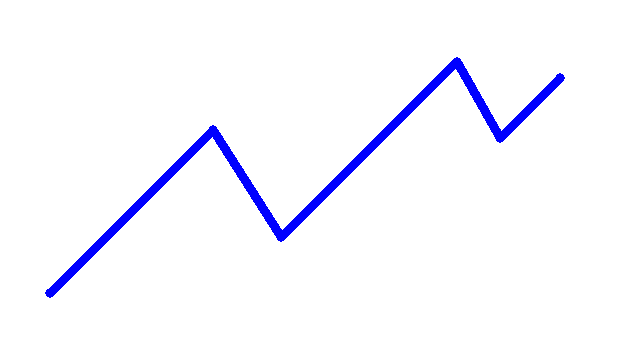
And just the opposite, here’s a typical bearish swing. Again, both new highs and lows are moving down:
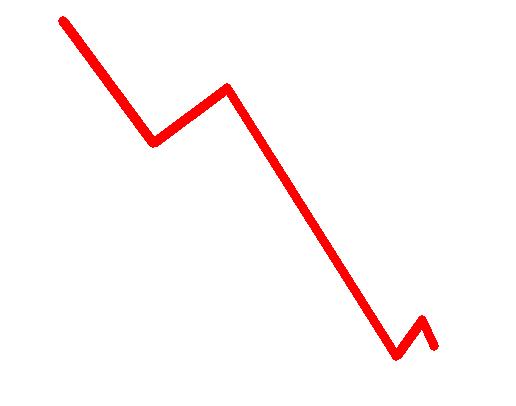
That was simple, but what about when the price is moving up and down and making non-consecutive highs and lows?
Just remember, if there is a lower low in the midst of a bullish swing, it continues to remain bullish until there are consecutive lower lows and lower highs. Take a look at this example:
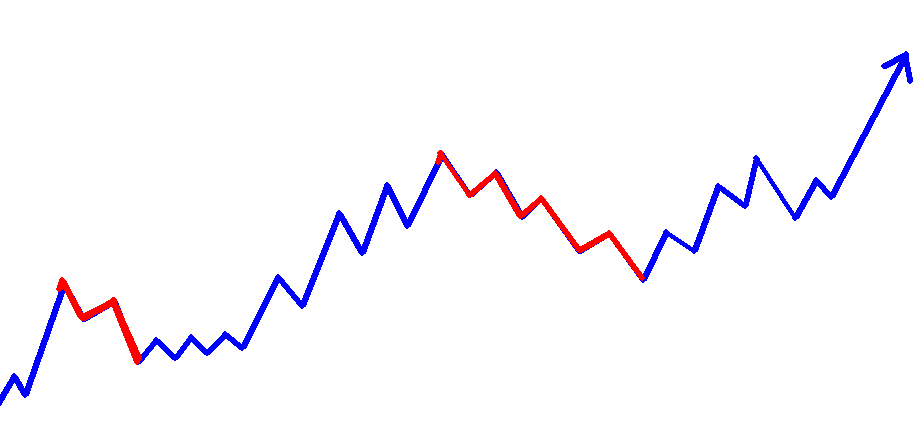
Bullish swings are blue, and bearish swings are red. Notice towards the end of the swing, there is a surge down where a lower low is created.
However, there is no consecutive lower low after that, so it remains a bullish swing. Let’s take one last look at some real charts to highlight the swings.
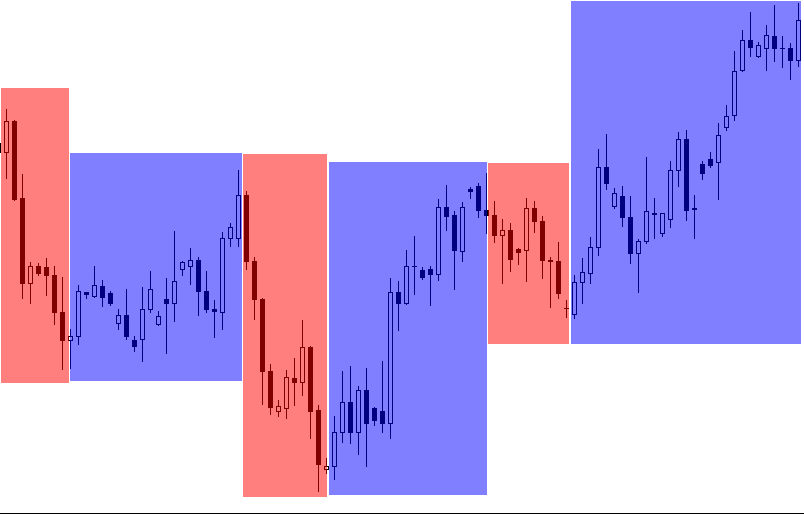
Each time a move down makes two lower lows and lower highs, we know it’s a separate bearish swing. We know it’s a bullish swing each time the currency starts moving up, making two consecutive higher tops and bottoms.
They continue to count as one swing until a separate swing forms in the opposite direction. Many times, the market will make a new high in the midst of a downtrend. This is just a fake and does not mean anything unless there is a higher low after the new high and then another higher high.
Here’s an example of how that looks in the market:
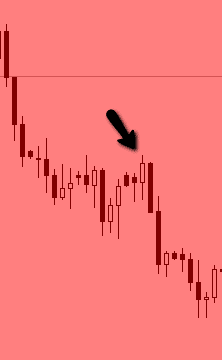
Notice the market surged up to make a new high. It was followed by a new low in the midst of a downtrend. So, we ignore that high and include it as part of the bearish swing.
Using the Correct Swing to Increase Profits
Now that you know how to identify the correct swing on a given time frame, use this information to become one of the most successful traders in swing high swing low trading.
Knowing Where the Technical Stop Placement Is
If you identify the correct swing, you automatically know where the technical stop placement is for a given trade. Always stay 7-20 pips below the low of the bullish swing for a buy and above the high of the bearish swing for a high.
Drawing a Fibonacci Extension to Identify High-probability Target Areas
Knowing the correct swing means you can draw a Fibonacci extension to identify high-probability target areas. See, without understanding how to identify the right swing, you won’t be able to place your stop OR your target in the right place.
To demonstrate the true importance of this, let’s look at an example of our Double Trend Trap trading method. The DTT Method is a great strategy based on trend continuation.
Watching out for Huge Implications
Identifying the correct swing with this strategy has huge implications. The DTT strategy looks for counter-trend moves, then draws a trend line on the counter-trend structure and waits for the break back into the direction of the trend. Here’s an example:

Here, the EUR/GBP has built a small counter-trend structure and is now breaking to the downside. This means that we are ready to short the market. However, we need to know where we will take profit and where we will put our stop loss. Using the information we’ve learned in this article, we can quickly identify the most recent swing:
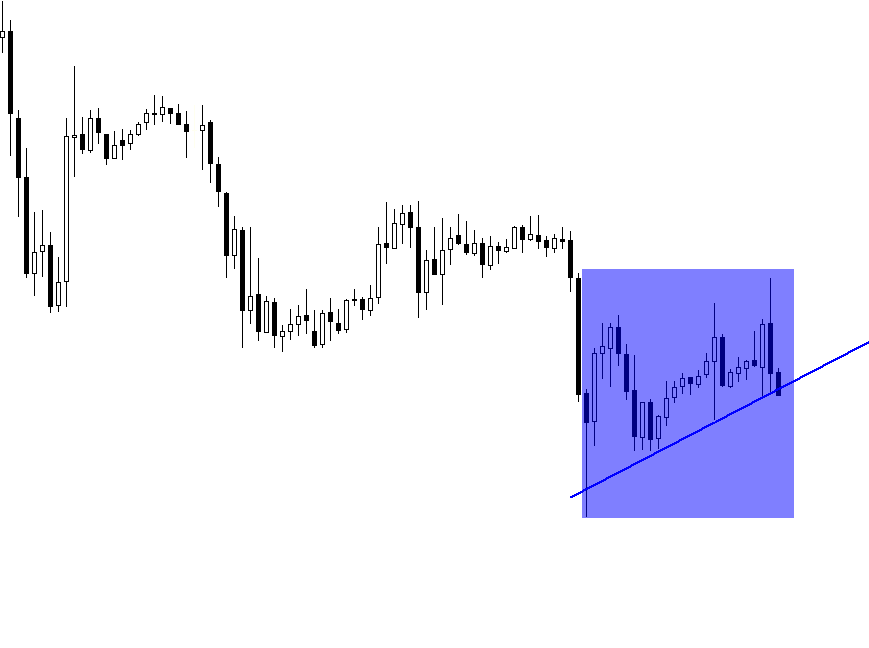
Now we know that the stop should be placed above the high of the recent swing, so we’ll identify the top and put our stop a few pips above that:
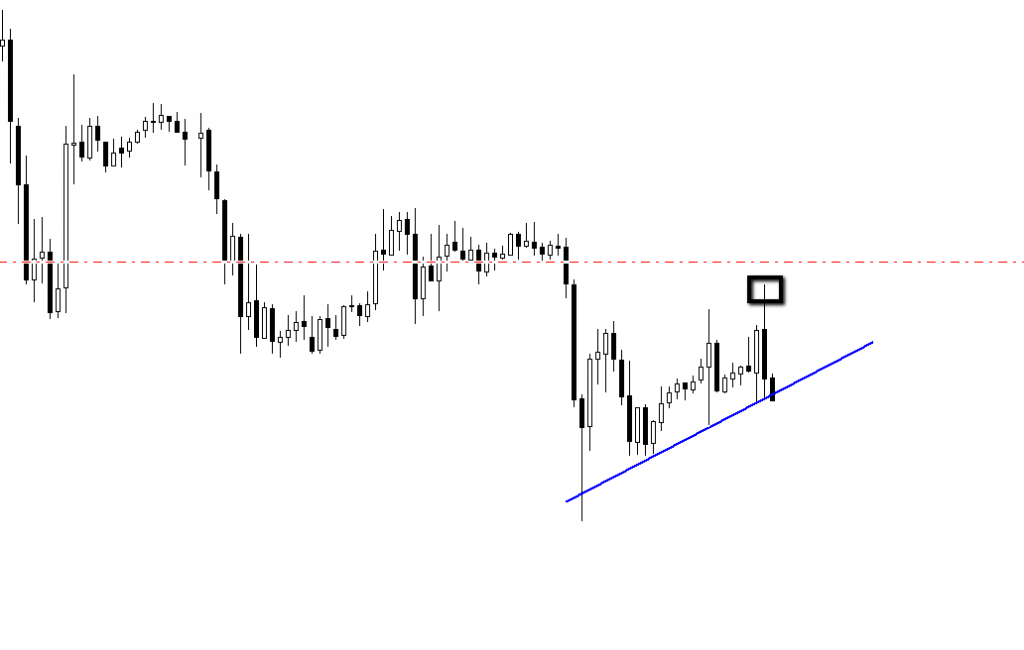
That’s the easy part. The big question is, “Where do we put our target?” Well, Fibonacci extensions make GREAT targets, but ONLY if you identify the correct swing. That’s what makes this article so important. You’ll place the target too far away without identifying the correct swing and kill your win rate.
Because we know the correct swing, we can draw a Fib and put our Target a few pips inside the 161.8 extensions so that we have a good size target AND a high probability of winning this trade. I simply draw the Fib from the swing low to the swing high and then place my target inside the 161.8 extension level:

Now, we wait and see. I’ll remove the Fib now that we have the SL and TP placed, and we will see how this trade develops:
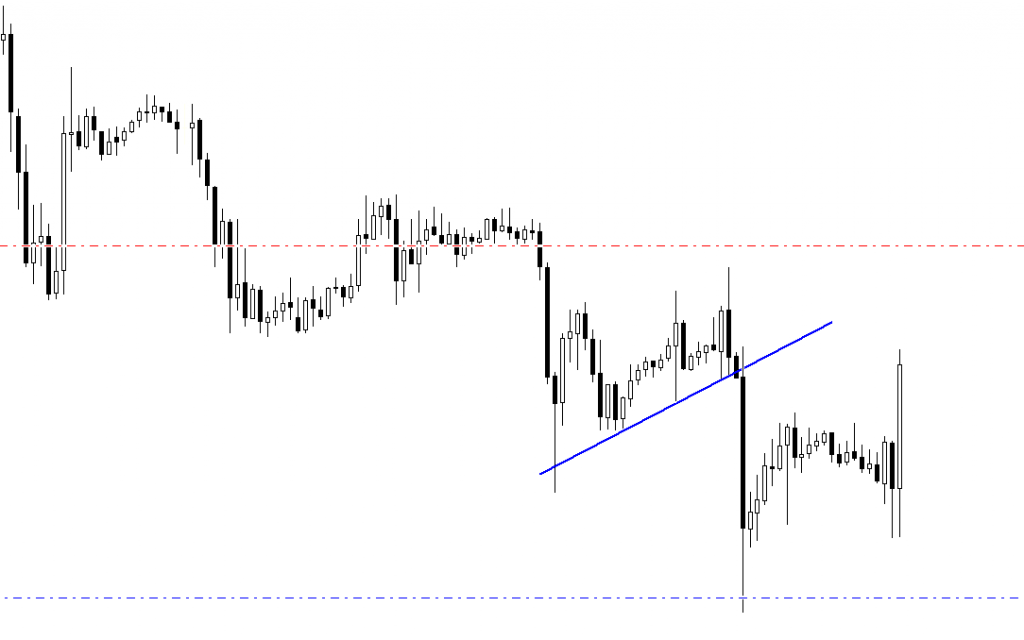
As you can see, the market surged right down to our extension level and stopped. Though not all trades will work out perfectly like this example trade, this is a fairly common occurrence.
In cases like this, picking the right swing is of HUGE importance. Many traders might simply grab the entire bearish move on the chart as the recent swing (I have seen this a lot) to draw their Fibonacci extension.
The problem is that, by doing so, they have dramatically reduced the chance that the trade will now hit their target. In the EUR/GBP example, using the entire bearish move leading up to the trade would have resulted in a stop-out instead of a nice target.
When it comes to swing high swing low trading, with every loss, you can trade-in for a win that is of huge significance. Just increasing your win rate by a tiny amount (assuming all else remains equal) can completely reverse your results as a trader.
I hope this article illustrates the connection between identifying market swings correctly and the ability to win a high percentage of your trades.
If you use this article as a resource and take advantage of this lesson, you will see a boost in your win rate fast.
This is a must-learn lesson for every trader. To ensure you fully understand it, here’s a short exercise for you to complete. Also, feel free to read about the trader’s tech and installing MT4 EAs with indicators.
Training Exercise for Swing High Swing Low Trading
- Look at the EUR/USD Daily chart for the total year of 2014. It should look something like this:
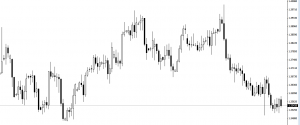
- Identify each swing (both bullish and bearish) that’s occurred on the chart so far.
- Take a screenshot of the identified swings and submit it in the comments below this article.
- We’ll get back to you to confirm you did it right or to critique your work.
Final Thoughts about Swing High and Swing Low
Understanding how to identify swing high and swing low is of paramount importance. This knowledge not only sharpens your market analysis skills but also enhances your ability to make informed trading decisions.
By mastering these concepts, traders can better anticipate market turns and trends, leading to more strategic entry and exit points. This technique is particularly valuable in volatile markets, where accurate predictions are key to maximizing profits and minimizing risks.
Ultimately, these skills are foundational to developing a robust and effective trading strategy.
Thanks for taking the time to read this article, and we look forward to seeing your completed exercises!
Please leave a comment below if you have any questions about swing high, swing low trading!







Apparently a can´t paste my screen.shot. 🙁
Here you go!
Hallo Nathan
Thank you for a great article and great lesson, I`ll surely start using it and I liked the way you explained the stop/limit.
Have a nice weekend!
Hi Nathan,
Thanks for the article. Unfortunately print screen on my computer is not working. I hope to attend to this soon.
I liked to opportunity to discipline myself to identify the swings and this was good practice.
Hi this is my homework, it was an excellent article Nathan
Hi, my homework
hi, it is very great strategy, i will use it, thanks a lot.
Very useful. Please send me article to plot support and resistance; the right way.
Awesome
you are really my piller. i enjoy your training
Glad you enjoyed the training!